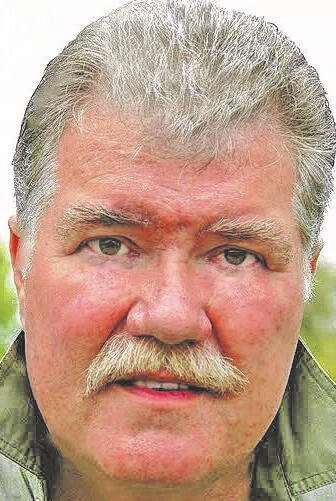
According to both calendar and almanac, the next few weeks are technically summer.
But this official designation doesn’t really fit—not for me, anyway. In my mind a quintessential summer day is one of those lazy scorchers, best spent lolling on the beach, sipping icy drinks and listening to Jimmy Buffett tunes.
Just because we call it summer doesn’t make it the case.
The problem arises because we’ve limited ourselves by dividing and imagining our year as four distinct seasons, each contained within its scheduled boundaries, with equinoxes and solstices acting as their bookends. Compartmentalized visualizations we conjure up like a quartet of gift-wrapped boxes labeled spring, summer, autumn, and winter.
However, facts and truth can occasionally be two separate matters—and our hearts can sense that difference.
At the center of these astronomically circumscribed seasons, the fit is fine—weather and landscape typically mesh in full agreement. Their terms fit.
Yet real seasons are fluid—chunks of moving time, each and every iteration unique, their stoppings and startings seldom well defined. Transitions, those pesky in-between stretches, can be messy, bewildering. Trying to shoehorn them into a designated seasonal name often doesn’t work—at least not if you’re paying attention to the information coming through your senses.
The next few weeks won’t quite fit our imagined ideals, neither looking nor feeling like true summer or genuine autumn. What we’ll experience instead is a betwixt-and-between mini-season—a changeover span occupying its own unique space on time’s annual wheel. Nameless, though I loosely view its days as “the time of purple and gold.”
Obviously, I base my descriptive phrase. characterization on the landscape. Just take a drive along any country road and you’ll soon see why.
Come September it seems every wild meadow around is clad in a brilliant cloak of goldenrods—as if old King Midas himself had laid his hand upon the land. Moreover, amid this shining yellow tapestry, shimmering in the sun like strewn amethysts, are scattered the breathtaking jewels of purple New England asters.
Purple and gold have long been the colors of royalty. Even when donned by native wildflowers growing beside a rural byway, they lose nothing of this regal splendor.
New England asters are common in Ohio, found wherever the soil is rich and fairly moist. A big plant will often top six feet in height. The flowers themselves, up to two inches across, consist of 40 to 100 rays centered around a yellow disk. A single stem can contain several dozen eye-catching blossoms.
Asters get their name from the Greek word for “star.” The same root which gives us astronomy, astrology, and asterisk. They were thus named because the flower head has a showy ring of florets or rays, reminiscent of the light rays of a twinkling star. Which is why asters were also once called starworts.
Colorwise, New England asters can range anywhere from pink to magenta, red to lilac, even white—though generally they’re a rich deep purple.
Asters are members of the huge Composite family, which includes sunflowers, daisies, chicory, and dandelions. Until recently, more than 150 native North American plants were classified under the genus “Aster.” Research employing DNA analysis and other techniques has now convinced botanists that—except for a single species found in Colorado and Alaska—the remaining U.S. asters are not true asters after all.
Humph and humbug! I’m too old-school to change…or much care. Regardless of what the botanical hairsplitters currently call them, a clump of New England asters surrounded by a field of gleaming goldenrods remains just as lovely.
Goldenrods, while also members of the Composite family, have so far escaped the clutches of the taxonomists. There are perhaps 125 species of goldenrods found worldwide, with about 90 species being native to the United States.
Of the handful of common goldenrods I know by sight, the gray goldenrod is my favorite, simply because I think its flowers are the richest shade of “goldenrod yellow.”
Flat-topped goldenrods are arguably the most common local species, though Canada goldenrods are also quite abundant.
Other species you might encounter locally are the zigzag goldenrod, the blue-stem goldenrod, and if you know where to look, the stiff goldenrod.
But let’s just forget names. September is here. Make it a point to find your way along a country road. Gaze at a few fields and meadows. Visit a prairie.
These first few weeks likely won’t seem quite like either summer or autumn. And you’re right—because they’re truly not! But those are just names—mere words.
This betwixt-and-between seasonal reality is something you can feast your eyes on—precious days splendidly dressed in purple and gold, waiting to fill your soul from its royal treasury.
Reach Jim McGuire at [email protected].

